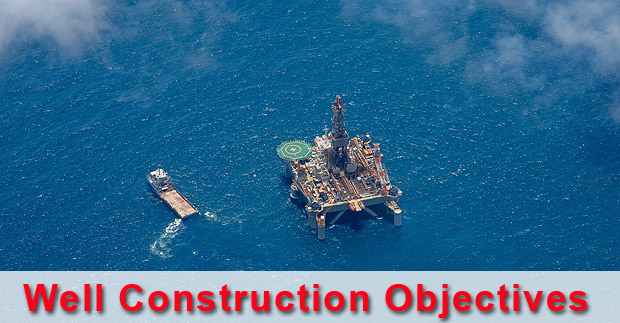When people talk about the tallest man-made structure, most people think about buildings as Burj Khalifa, Tokyo Sky Tree, CN Tower etc. However, offshore structures are far even taller than the tallest building.

When people talk about the tallest man-made structure, most people think about buildings as Burj Khalifa, Tokyo Sky Tree, CN Tower etc. However, offshore structures are far even taller than the tallest building.

When the drill string get stuck, there are several ways to free the string as using Jar (up and/or down), straight pull, working torque down, etc. Pulling stuck pipe with torque in the drill string is one of those technique which often utilize to free the stuck drill string. However, there are some concerns that you should know before doing this because torque in the string will reduce a tensile capacity of tubular. This is very important to read and understand the combined load chart (Torque‐Tension Graph) in order to determine the limitation before pulling the pipe.

For this example, we use 5” DP, S-135, NC50 (4-1/2” IF connection) to be a reference figure.
Pipe information
This is the real example of how to determine stuck depth using the stuck depth calculation.
Well Information:
While tripping out of hole to 6,850’MD, observe over pull 40 Klb over pick up weight. Stop tripping out and attempt to go down no issue. Attempt to rotate, pipe is able to rotate at 30K ft-lb. Attempt to circulate, observe restricted flow.

Figure 1 – Stuck While Pulling Out Continue reading
Well planning, design and construction phases are mainly concerned with three objectives:
The above mentioned objectives do not come with standard specific goals and vary based on the location and environment of operations. The planning team has to correctly identify all the goals and factors that influence the project.

The first step of well planning is Well Proposal or Statement of Requirements and it is mainly concerned with the Exploration and Reservoir Engineering Department. The contents of this document include the specific objectives of the well and are can be classified as Exploration, Appraisal or Development. Continue reading
You know that it is quite difficult to explain someone who never been working and involving in this industry to fully understand the big picture. You need to share this book to them.
Oil: An Introduction for New Zealanders by Ralph D. Samuelson
Published by the New Zealand Ministry of Economic Development Continue reading